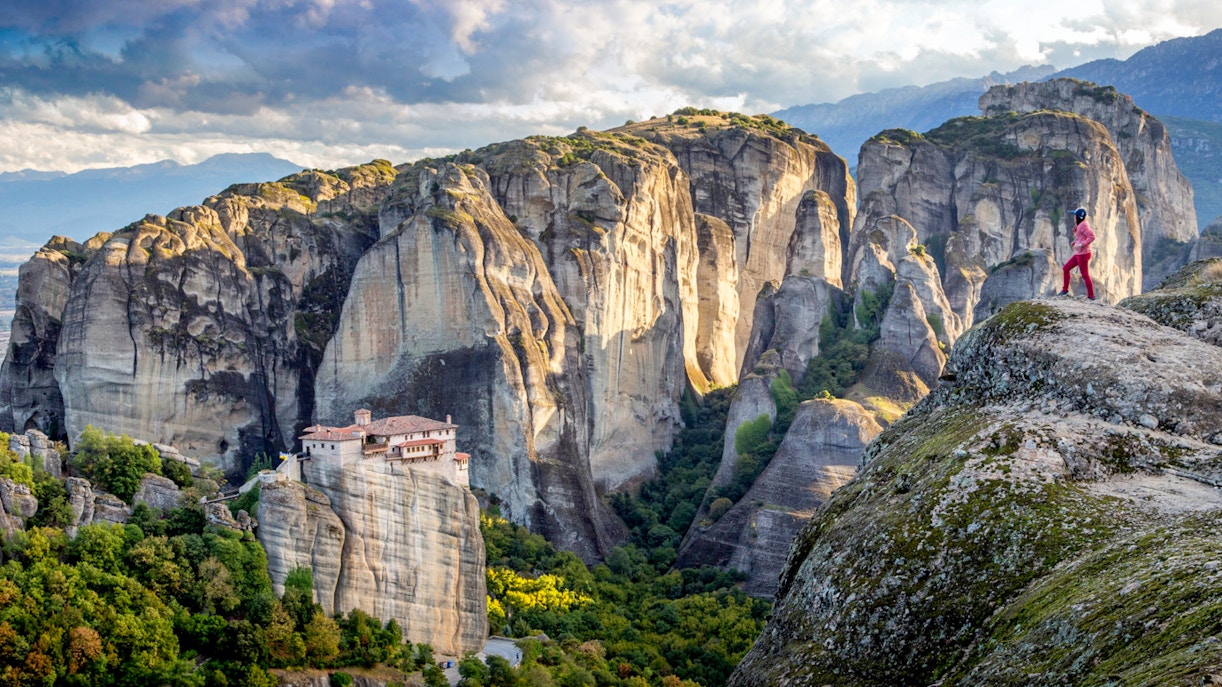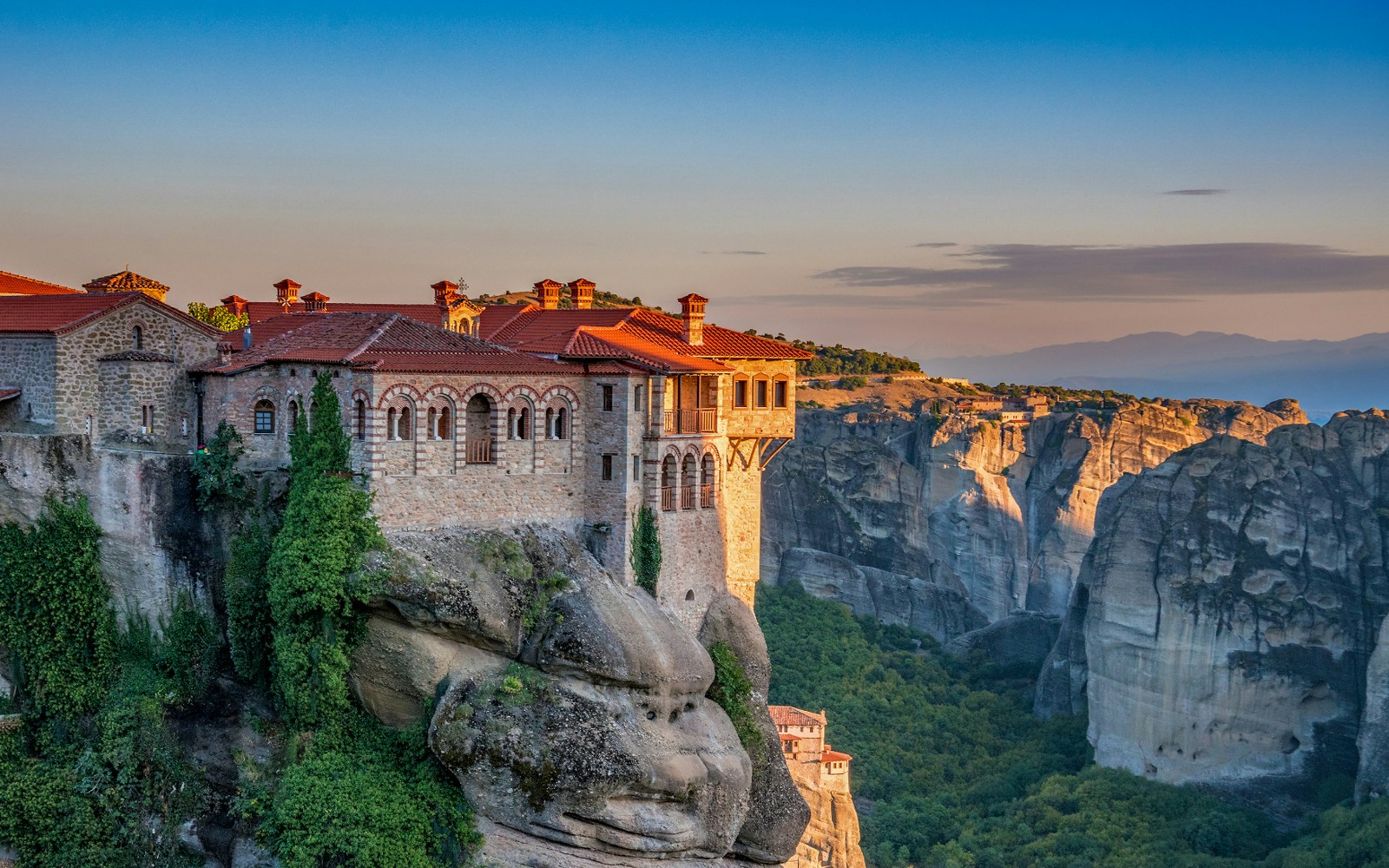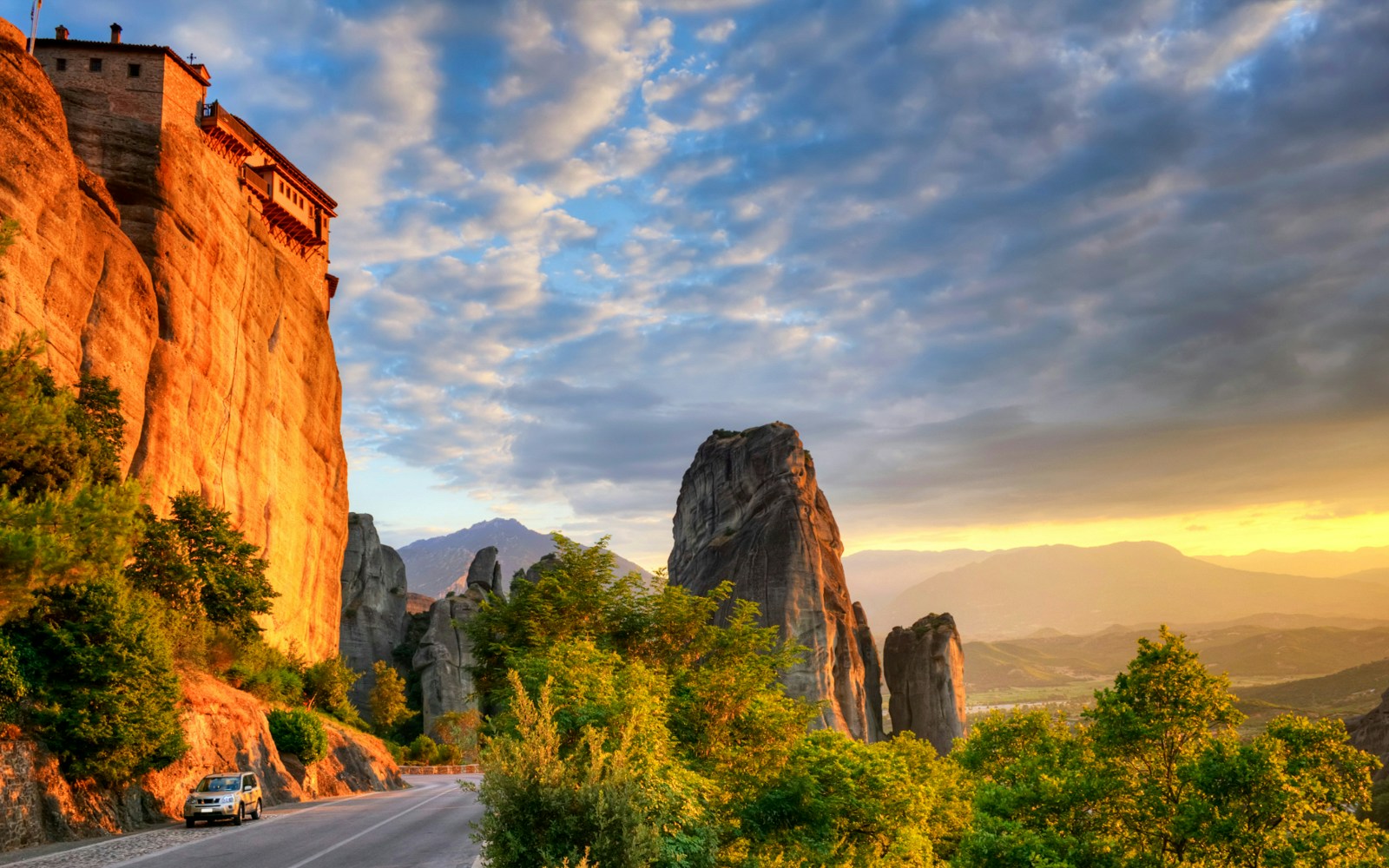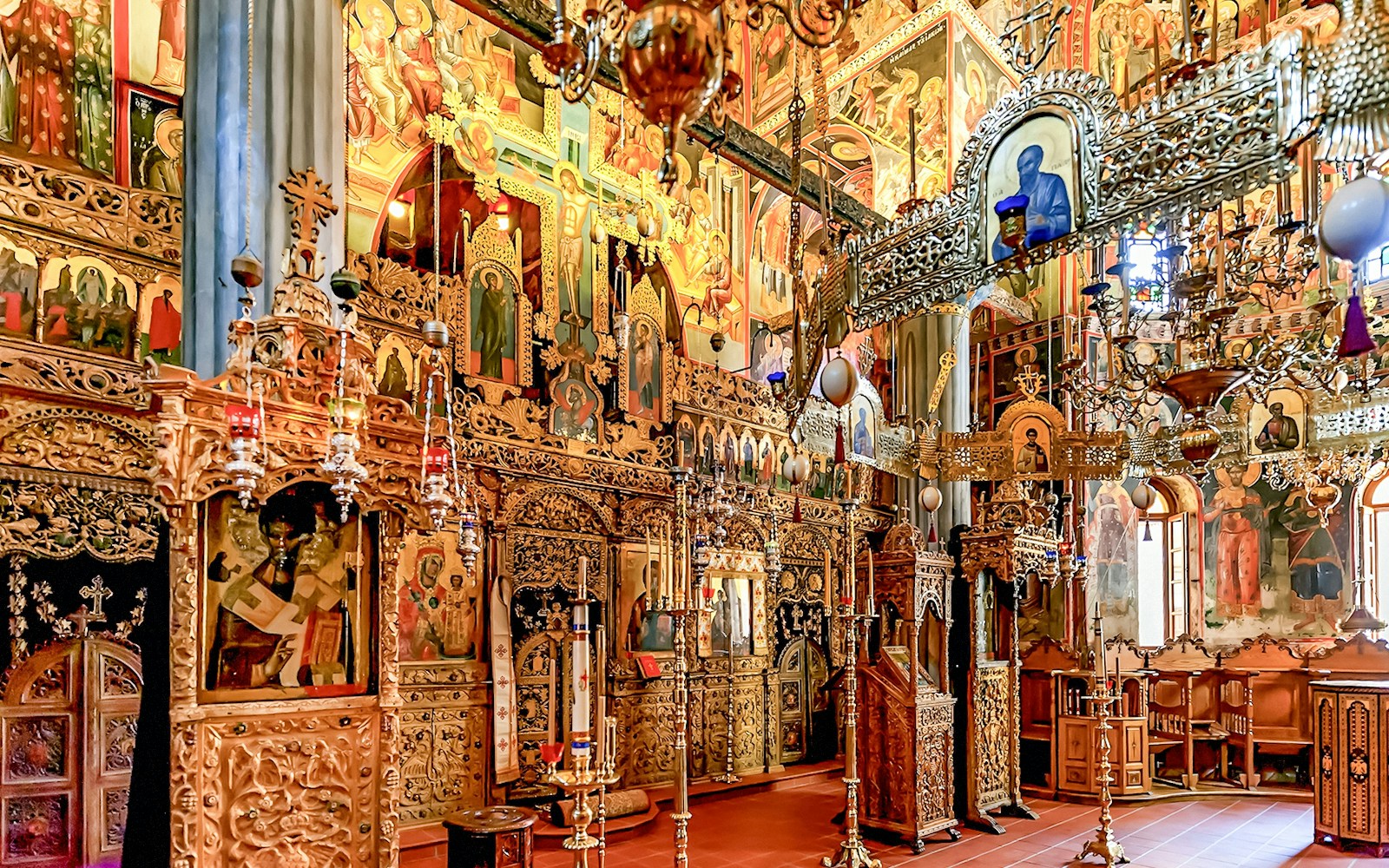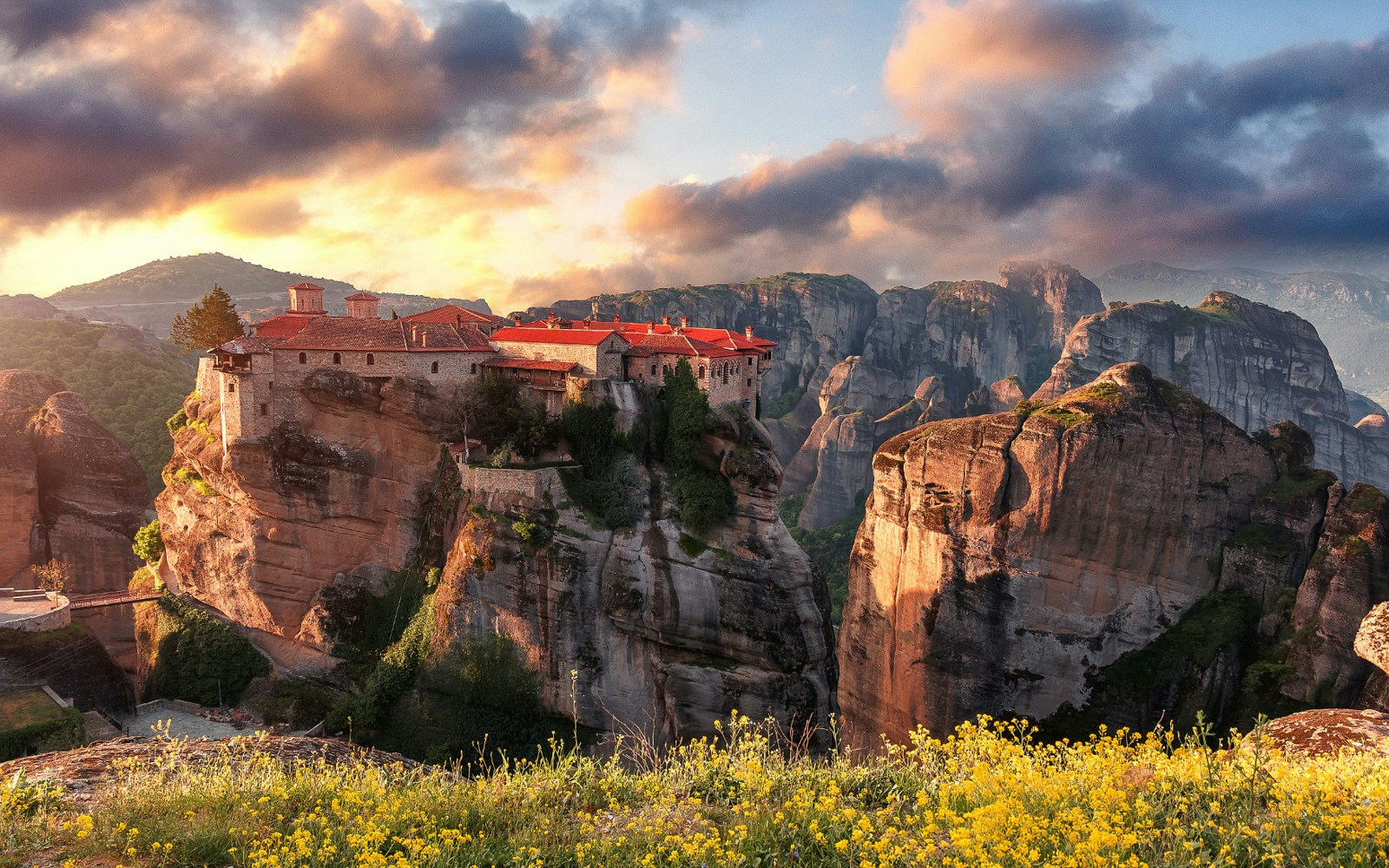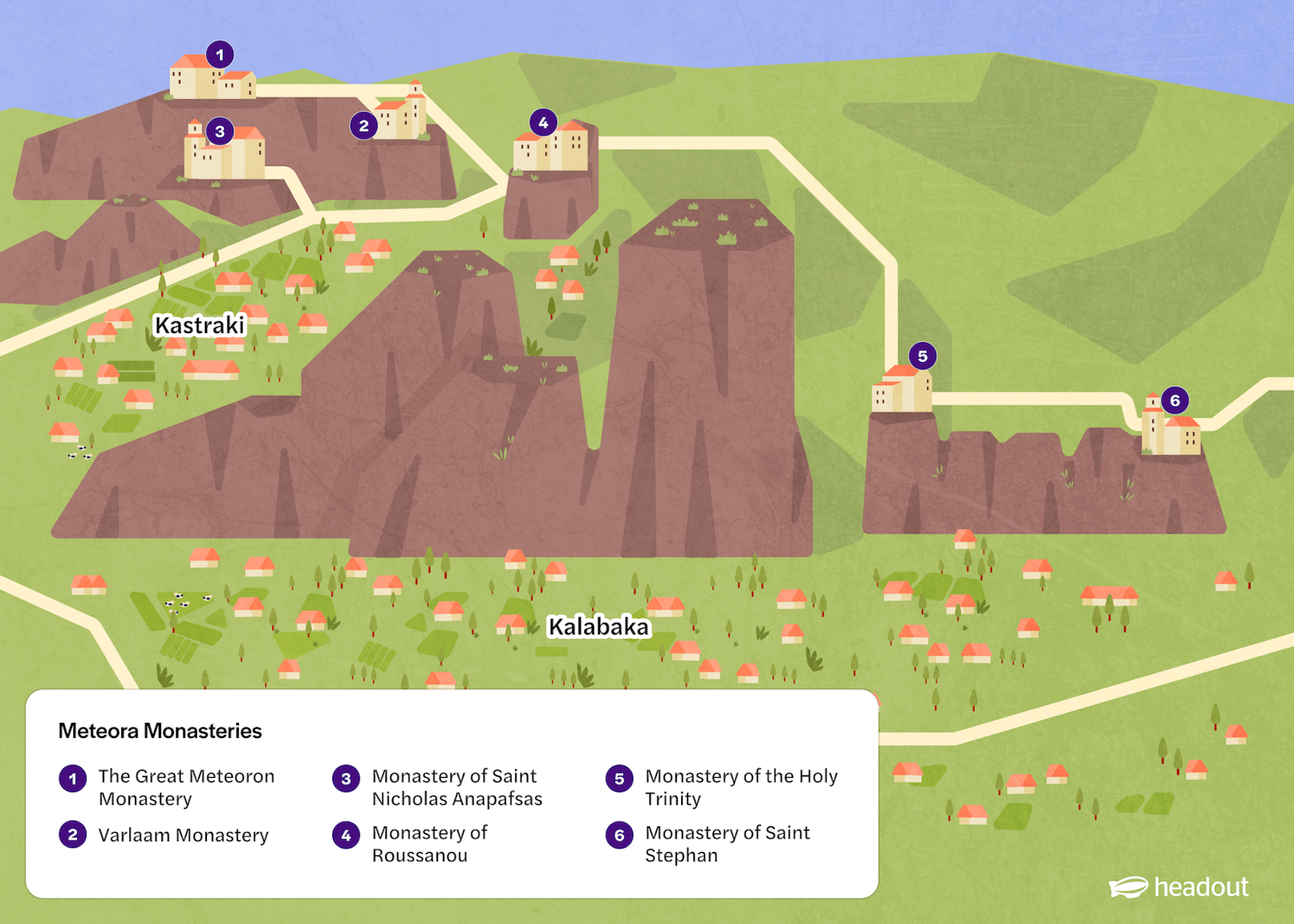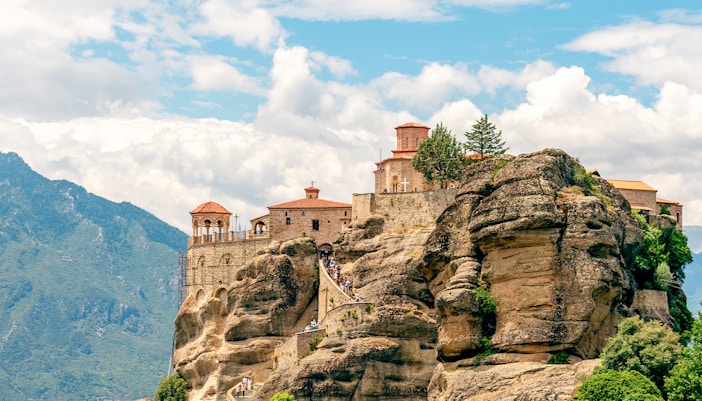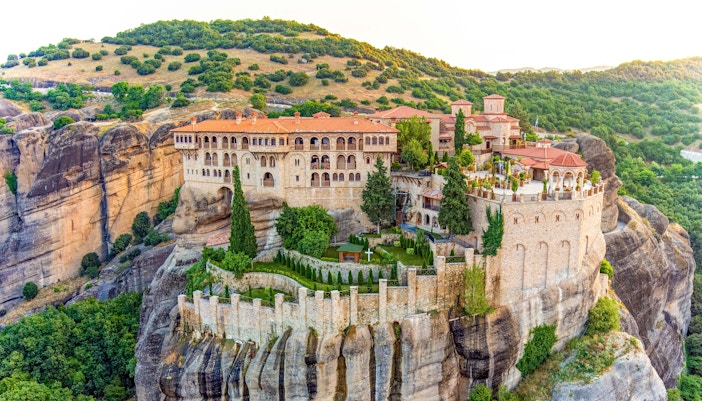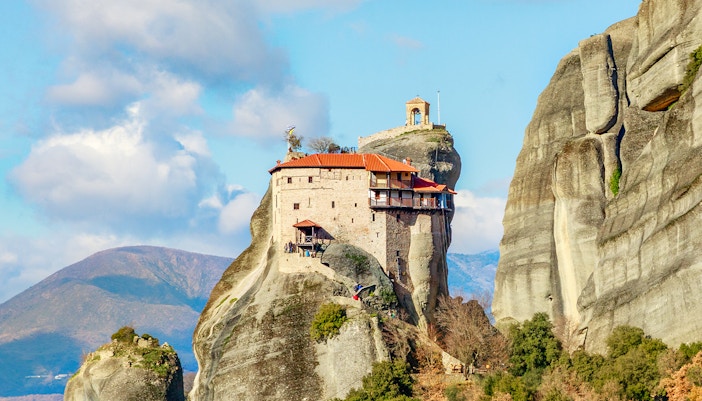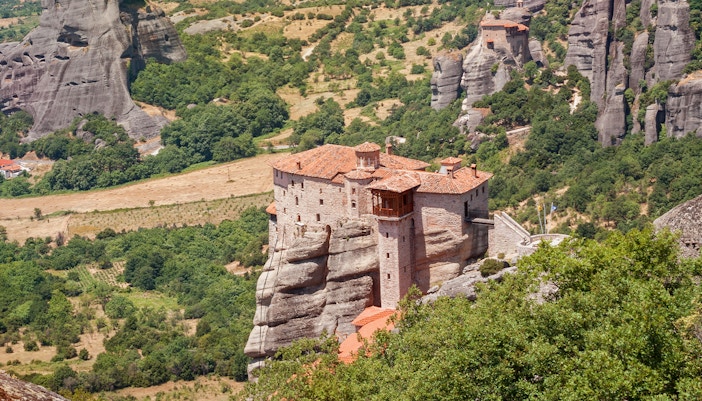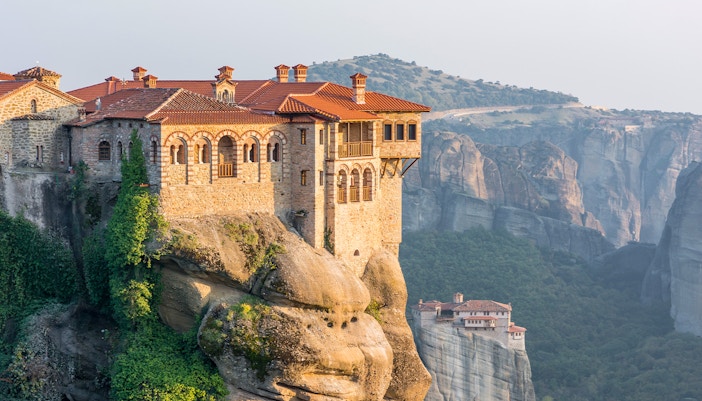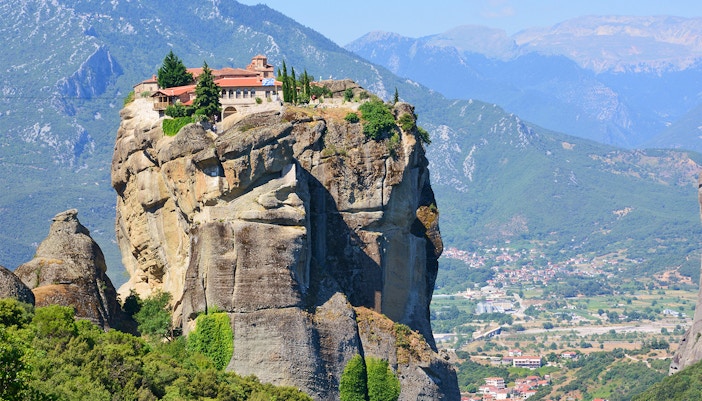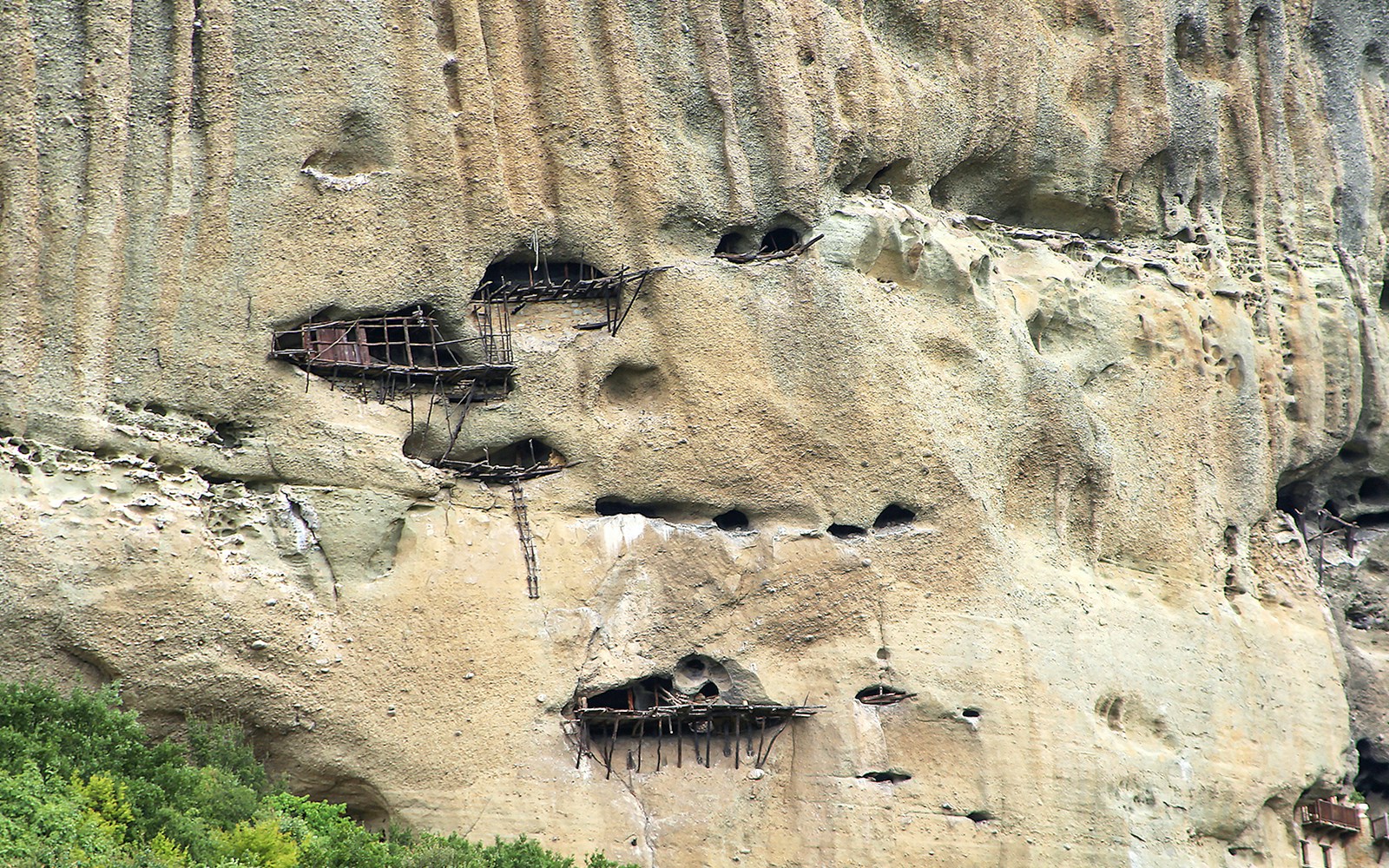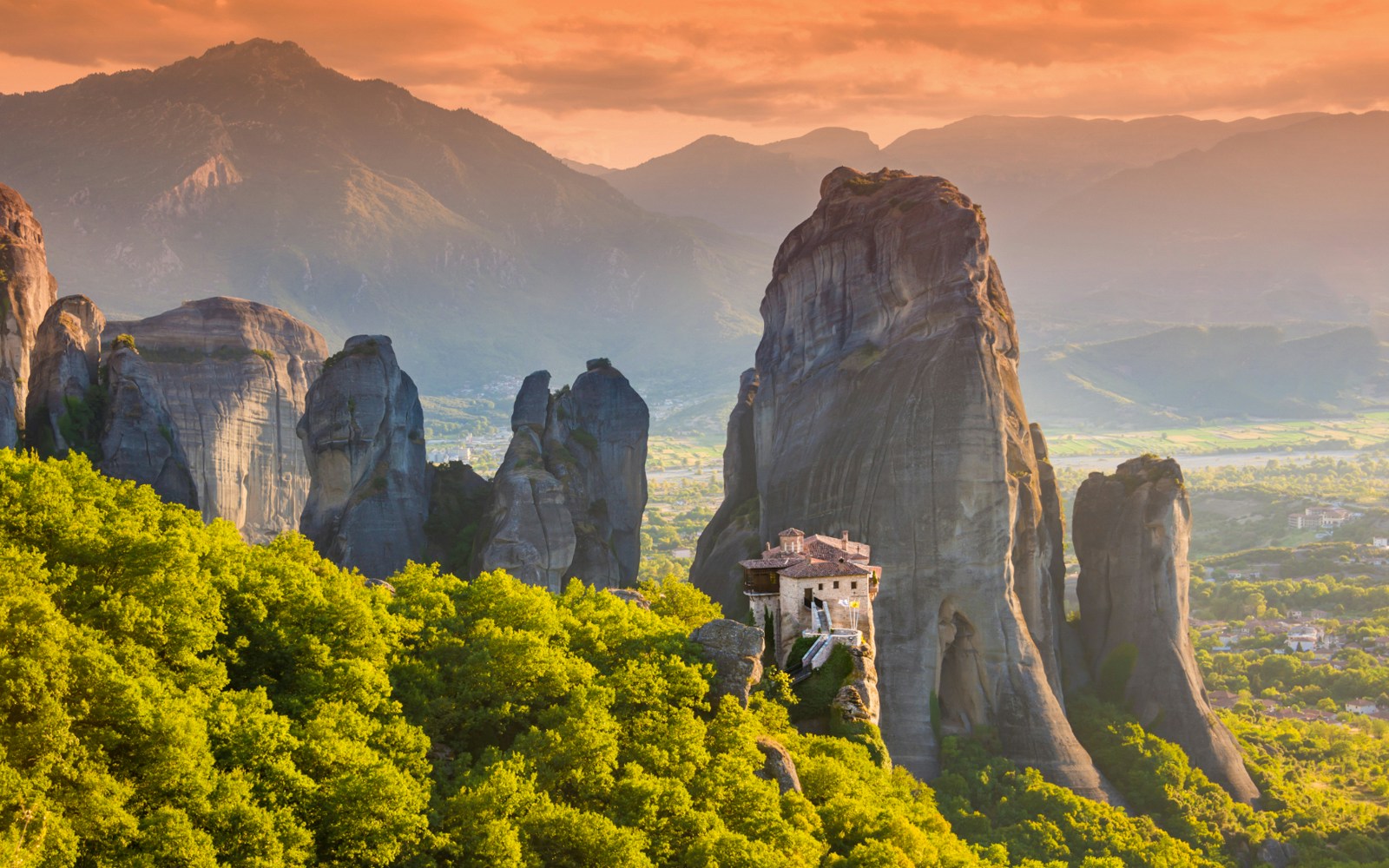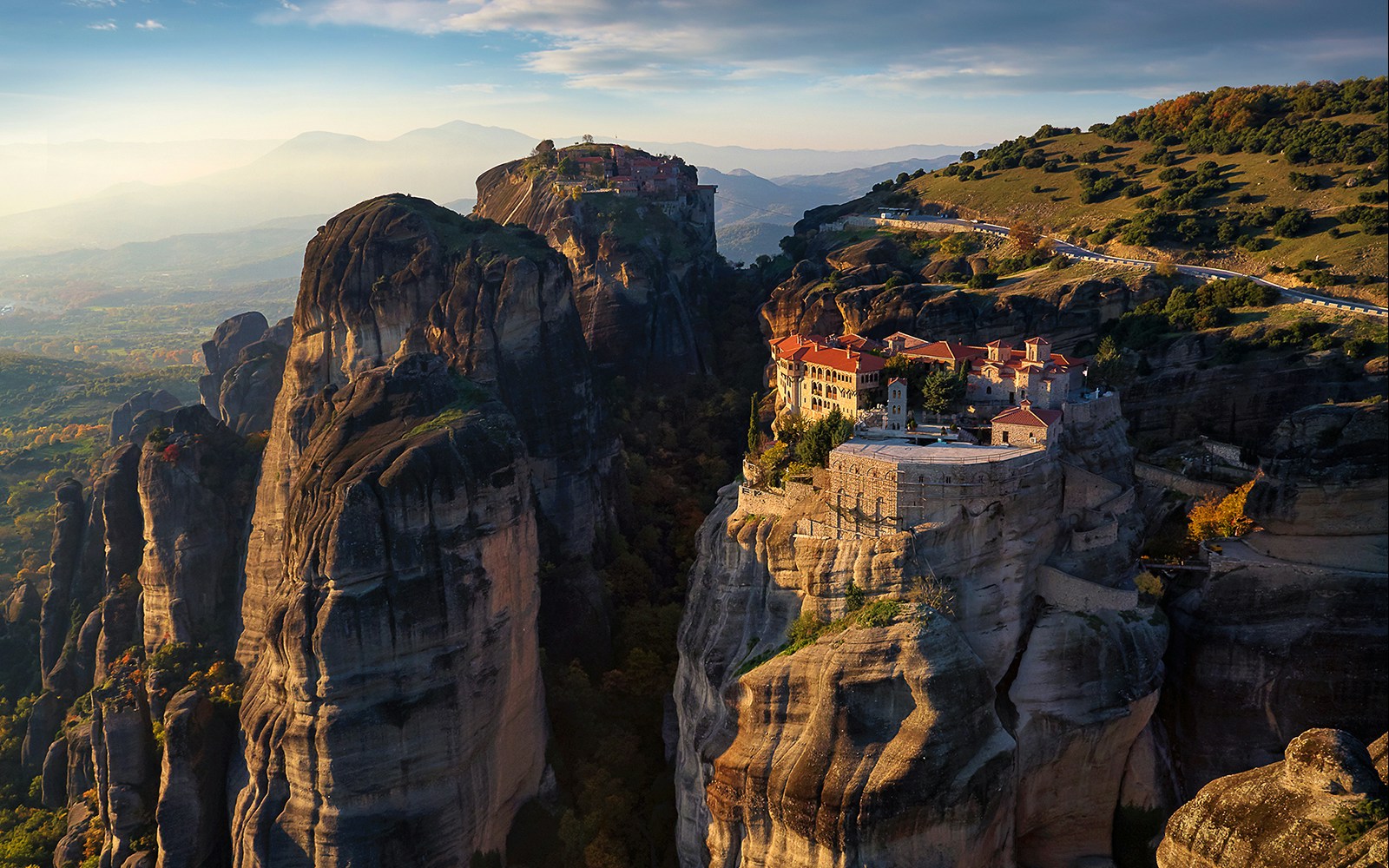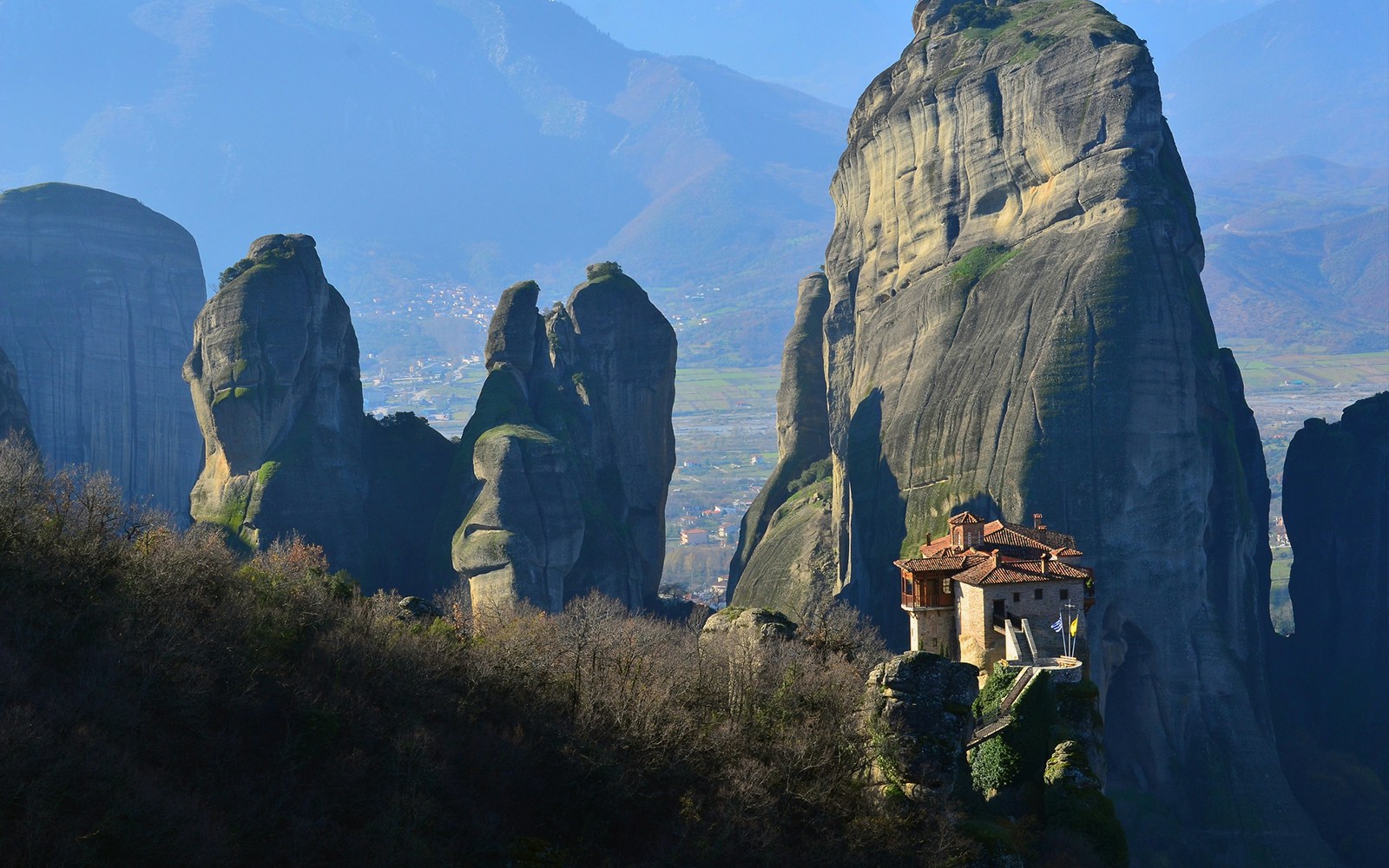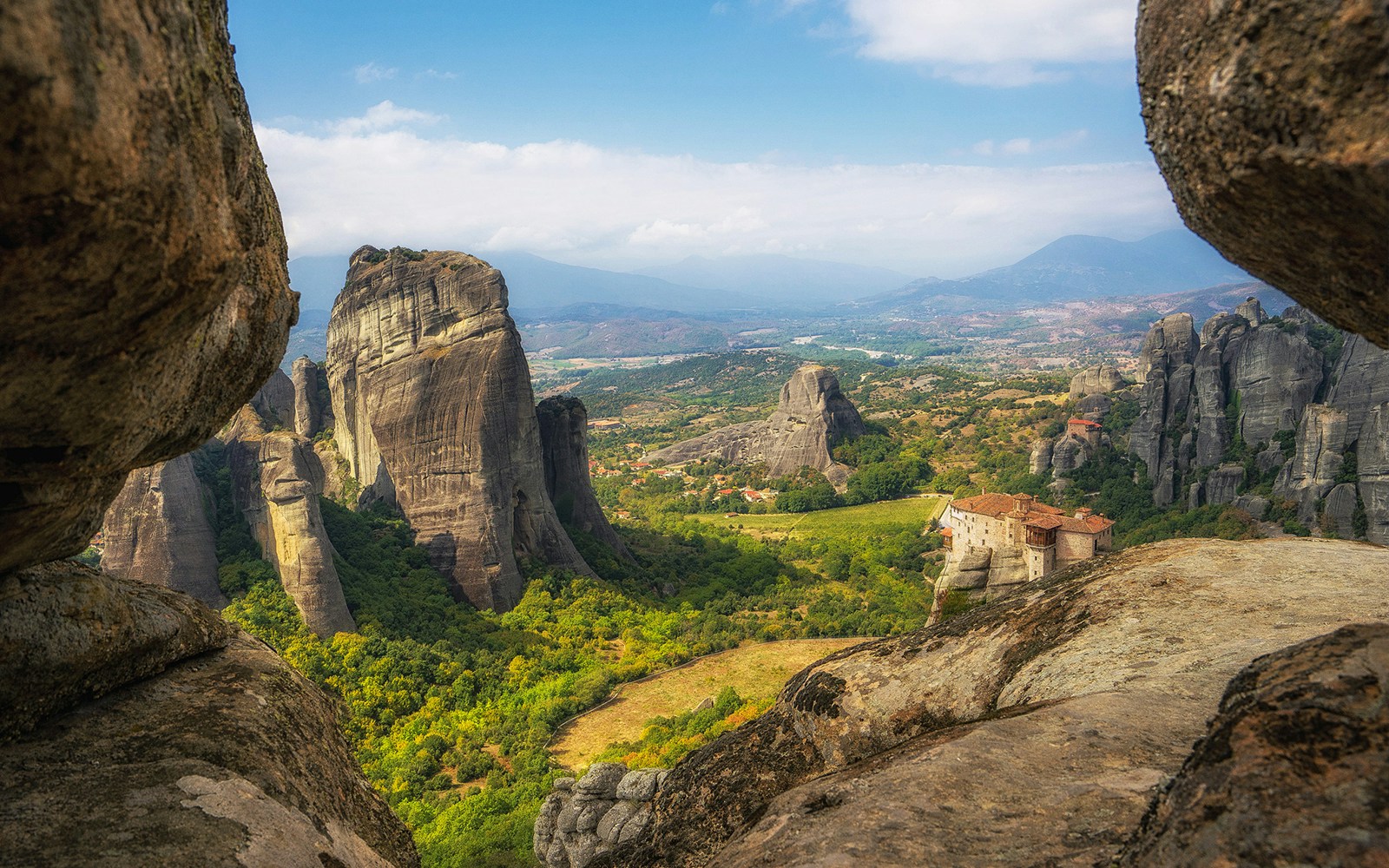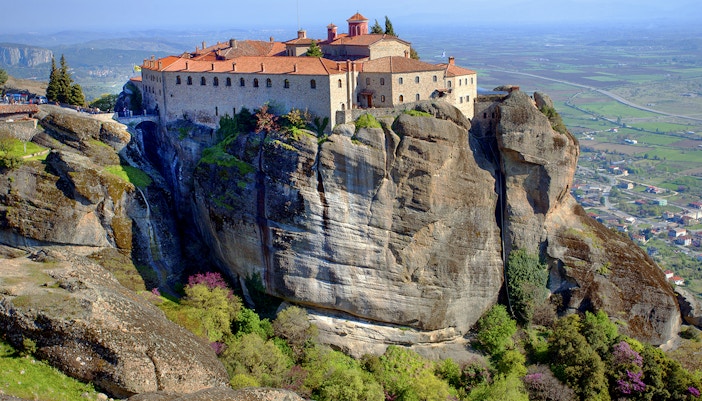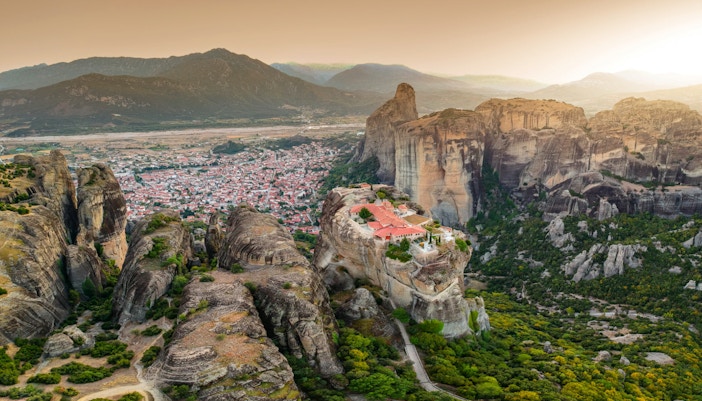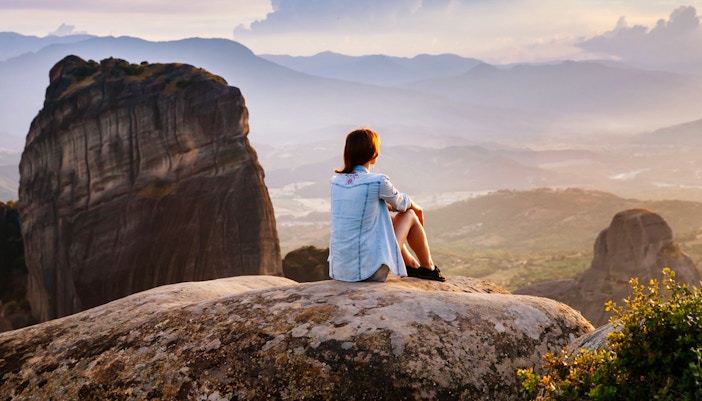- Spiritual retreats for monks seeking solitude: Founded in the 14th century, the monasteries provided monks a secluded space atop cliffs to focus on prayer and study away from political turmoil and Ottoman invasions.
- Preserving Orthodox traditions & art: The monasteries preserved Orthodox Christianity through iconography and frescoes, safeguarding religious traditions during Ottoman rule.
- Centers of learning: In addition to spiritual practice, the monasteries taught reading, writing, and religious studies, and their libraries housed thousands of manuscripts that would later play a role in the Greek War of Independence by fueling national consciousness.
- A symbol of resistance & resilience: During the Ottoman occupation, the monasteries acted as safe havens for rebels, using their isolated position to maintain independence and preserve Greek identity.

